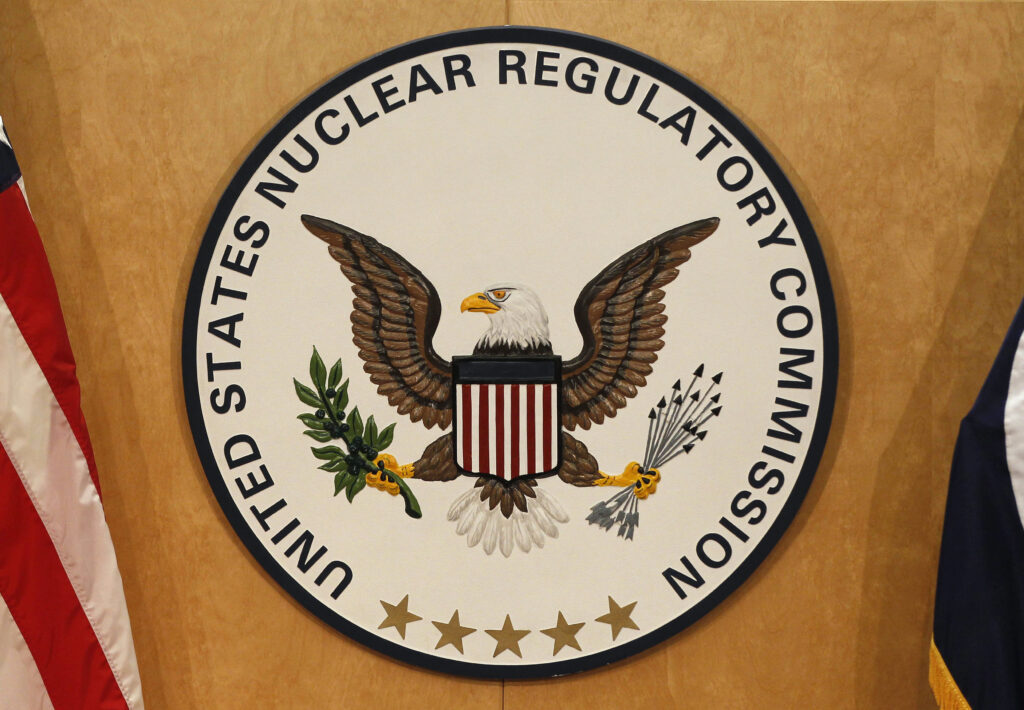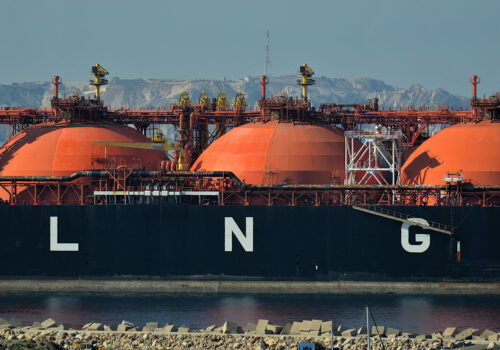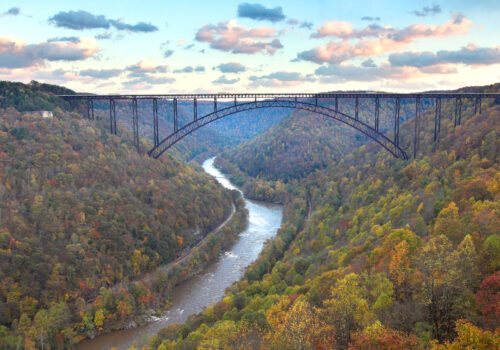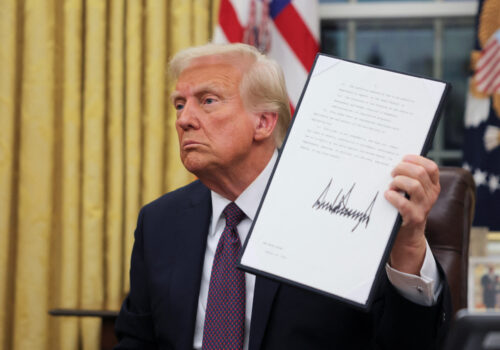On Friday, US President Donald Trump signed four executive orders related to the rapid deployment of next-generation nuclear technologies in the United States. Overall, the orders represent a policy outlook on nuclear energy that has remained relatively consistent for nearly a decade. However, there are a few key breaks from precedent, especially in that the orders encourage commercial nuclear fuel recycling and decrease the independence of the Nuclear Regulatory Commission (NRC).
New reactors and national security
“Deploying Nuclear Reactor Technologies for National Security” is the most comprehensive of the four. It aims to speed the deployment of advanced reactors at Department of Defense facilities, in order to provide power for military installations and for operational energy. The executive order notes that the regulatory pathway will be through the United States Army and ambitiously calls for one reactor to be operational at a “domestic military base or installation no later than September 30, 2028.” It also calls for the deployment of advanced reactors at Department of Energy facilities, and it directs the US secretary of energy to designate artificial intelligence (AI) data centers that “are located at or operated in coordination with Department of Energy facilities . . . as critical defense facilities, where appropriate.”
In a departure from what has been the US government’s de facto stance toward commercial nuclear fuel recycling in the United States (assuming that it refers to commercial reactors), this order calls for the US secretary of energy to “identify all useful uranium and plutonium material within the Department of Energy’s inventories that may be recycled or processed into nuclear fuel for reactors in the United States.” There are currently no domestic commercial fuel recycling facilities in the United States, and the partnership outlined in this order between the Department of Energy and industry will likely be a boon to US reactor companies looking to use recycled fuel, especially as competitor countries stand up their own recycling capabilities. The order then goes on to direct the Department of Energy to provide high assay low-enriched uranium (HALEU) for commercial reactors that are authorized to deploy at the department’s sites. This will add to the demand signal for HALEU fuel and strengthen the domestic nuclear fuel supply chain.
Importantly, the order excludes the Department of Defense and the Department of Energy from the National Environmental Policy Act (NEPA) for construction of advanced reactors on some federal sites. It also notes that there may be additional categories that will be excluded from adhering to NEPA. The Department of the Interior already has a number of categorical exclusions for NEPA (for example, for geothermal exploration) but does not yet have any listed for nuclear reactors. The rest of this order touches on interagency coordination, civil nuclear exports, and employee clearances.
Changes to the NRC
At first glance, the next executive order, “Ordering the Reform of the Nuclear Regulatory Commission,” appears more measured than news reports had predicted over the past few weeks. It mentions a reduction in force for the commission, but it notes that “certain functions may increase in size consistent with the policies in this order, including those devoted to new reactor licensing.” At the same time, the order directs the NRC to finalize a revision of its regulations and guidance documents, and this revision must be concluded within eighteen months. It also directs an eighteen-month deadline for final decisions on construction and operation applications for any type of nuclear reactor. It is difficult to see how an understaffed agency will be able to complete more work in less time.
Although the new executive order does not explicitly mention White House oversight of the NRC, it does note the involvement of the Office of Management and Budget (OMB) and especially the Department of Government Efficiency (DOGE) in reorganizing the NRC. These measures, combined with the February 18 executive order “Ensuring Accountability for All Agencies”—which already decreased the independence of the NRC—could likely reduce the NRC’s workforce and lessen its standing among global nuclear regulatory authorities. This could happen even as the White House directs it to hasten its regulatory processes to expedite the licensing and deployment of next-generation nuclear technologies.
The question of new testing
A third order, “Reforming Nuclear Reactor Testing at the Department of Energy,” directs the national laboratory system to reform its process for ensuring that reactor developers are able to test their reactors quickly and effectively. However, the document does not explicitly direct the national laboratory system to construct new test reactor facilities. The first Trump administration signed into law the Nuclear Energy Innovation and Capabilities Act in 2017, which addressed the need for a fast-neutron test reactor and resulted in the start of the Versatile Test Reactor (VTR) project at Idaho National Laboratory.* But Congress later defunded this project. Although the new order does not explicitly call for the construction of a new testing facility, its direction to increase capacity for testing new reactors may lead Congress to look again at the VTR project.
The broader nuclear base
Finally, “Reinvigorating the Nuclear Industrial Base” addresses well-trodden issues, such as workforce development and the restarting, completion, uprating, or construction of nuclear power plants. It also calls for a new report to address the fuel cycle, especially regarding high-level waste management, fuel recycling (including commercial recycling), isotopes, and enrichment and conversion. This new report would follow the Nuclear Fuel Working Group’s 2020 report “Strategy to Restore American Nuclear Energy Leadership,” which focused on the front-end of the fuel cycle as well as civil nuclear exports. The order also notes that the US secretary of energy shall update the department’s “excess uranium management policy to align with the policy objectives of this order and the Nuclear Fuel Security Act” of 2023, which was signed into law by US President Joe Biden.
Based on these new executive orders and earlier announcements, the second Trump administration’s policies toward nuclear energy seem largely aligned with the policies of the Biden administration and the first Trump administration. The major shift that is reflected in this set of executive orders is the desire to conduct a reduction in force across government agencies and to weaken the independence of regulatory authorities, including the NRC. In the new orders, the Trump administration has articulated ambitious goals for rapid deployment of next-generation nuclear technologies; however, reducing personnel and funding for the NRC and the Department of Energy, along with weakening the NRC’s independence and global credibility, will make it challenging to realize the full potential of the US nuclear energy industry.
Jennifer T. Gordon is the director of the Nuclear Energy Policy Initiative and the Daniel B. Poneman chair for nuclear energy policy at the Atlantic Council’s Global Energy Center.
Note: The Idaho National Laboratory is a donor to the Atlantic Council’s Nuclear Energy Policy Initiative.
Further reading
Thu, Jan 23, 2025
Trump’s clear path to securing US oil and gas dominance
New Atlanticist By Richard L. Morningstar, Landon Derentz
The United States should seize on this moment to ensure long-term US LNG exports to Europe permanently replace Russian natural gas flows.
Mon, Feb 24, 2025
Atoms for Appalachia: The role of nuclear energy in economic development
Report By Lauren Hughes
Advanced nuclear technologies can drive economic security and energy security within Appalachian states.
Wed, Jan 22, 2025
Seven questions (and expert answers) about Trump’s first actions to transform US energy
New Atlanticist By
Trump began his second term with a slew of statements and executive orders affecting energy. Atlantic Council experts decode what the changes will do and what to expect next.
Image: A U.S. Nuclear Regulatory Commission sign is pictured at the headquarters building in Rockville, Maryland, March 21, 2011. REUTERS/Larry Downing




